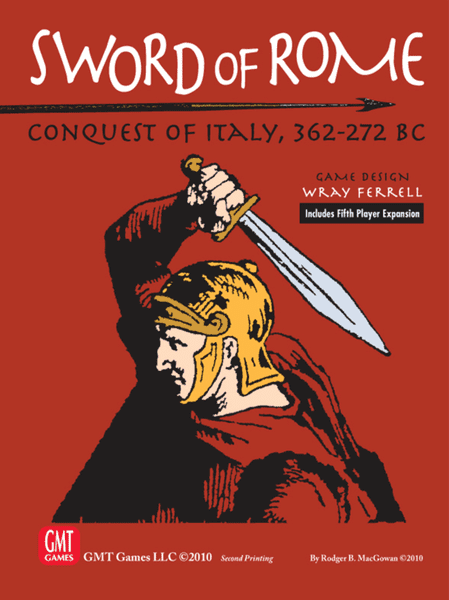Sword of Rome: Conquest of Italy, 362-272 BC (2004) Board Game
Sword of Rome: Conquest of Italy, 362-272 BC is a board game that simulates the political and military struggles in ancient Italy during the period of 362-272 BC. Players take on the roles of different factions vying for control over the Italian peninsula, including Rome, Carthage, and various Italian tribes. The game captures the essence of the power struggles, alliances, and betrayals that characterized this tumultuous period in history.
Game Components of Sword of Rome: Conquest of Italy, 362-272 BC
How To Setup Sword of Rome: Conquest of Italy, 362-272 BC
Setting up the game involves placing the game board in the middle of the playing area. Each player selects their tokens and units and places them on the designated starting areas on the board. The event cards are shuffled and placed within reach of all players. Players also need to read through the rulebook to understand the specific setup and starting conditions for their factions.
Gameplay Mechanics and Game Objective
Player Experience
Playing **Sword of Rome** is a deep and engaging experience that combines strategic planning with historical context. Players need to balance short-term goals with long-term strategies, managing resources carefully while responding to the dynamic events that arise during the game. The game’s length and complexity make it a commitment, but it rewards players with a rich and immersive gaming experience.
Pros
Cons
Personal Thoughts on Sword of Rome: Conquest of Italy, 362-272 BC
**Sword of Rome: Conquest of Italy, 362-272 BC** is ideal for serious board game enthusiasts and history aficionados. It is particularly suited for players who enjoy complex, long-form strategy games and are willing to invest the time to learn and master its mechanics. For those who appreciate the historical context and are looking for a game that challenges their strategic thinking, **Sword of Rome** is an excellent choice. However, it may not be the best fit for casual gamers or those looking for a quick gaming session.
We are supported by our audience. When you purchase through links on our site, we may earn an affiliate commission, at no extra cost for you. Learn more.

